Interview: Gibson's Cesar Gueikian on the past, present and future of the guitar giant: "We care about the quality, we care about the legacy that we will leave behind"
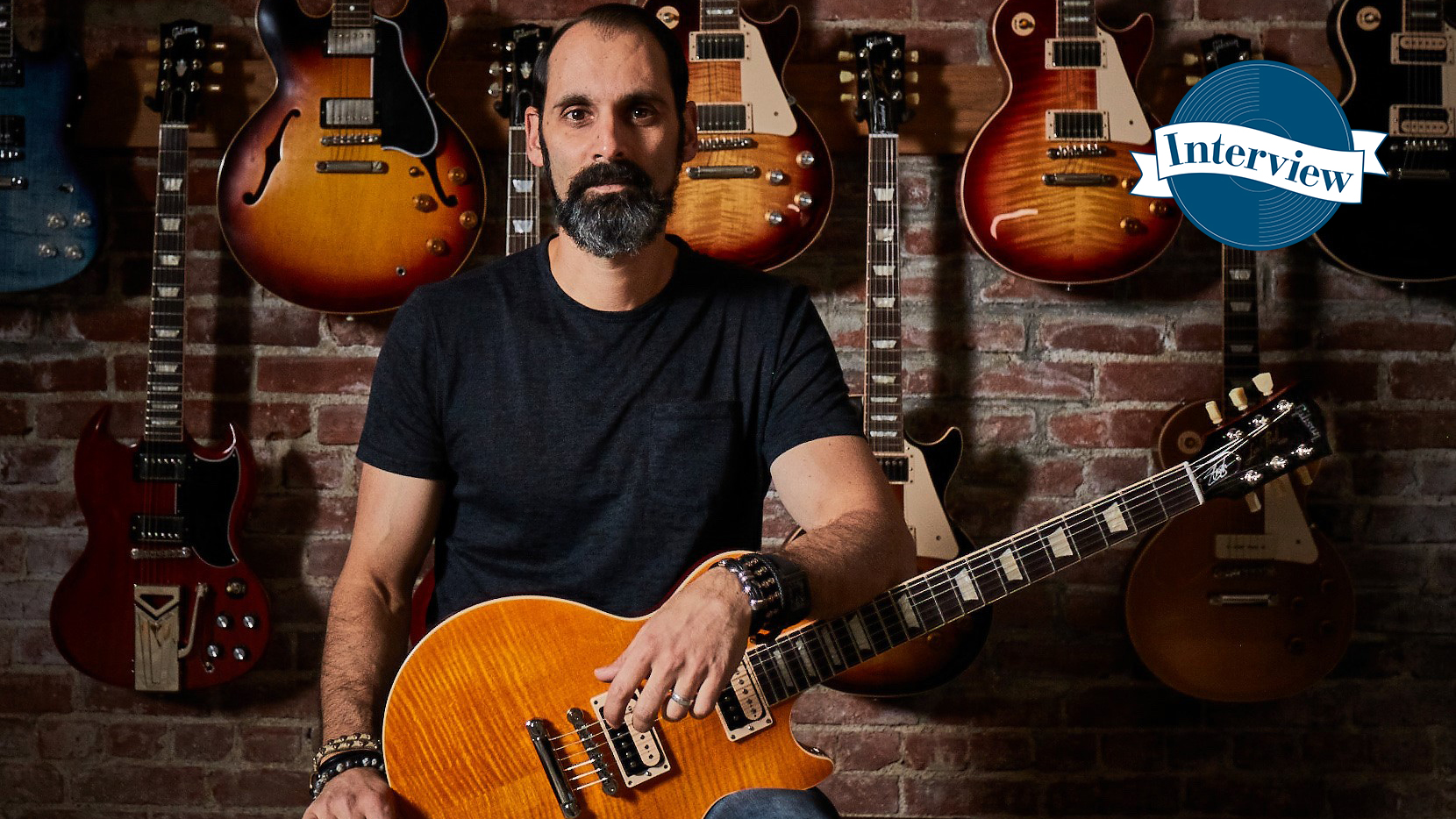
In the world of guitar 2019 was a line in the sand for Gibson that was overdue. It began at the 2019 Namm show in January where Gibson set out its stall not so much a comeback as a return to what it should have been doing; focussing on making great guitars.
The robot tuner-laden brouhaha around 2015's Gibson Standard electric guitar line and eyebrow-raising decisions during Henry Juszkiewicz's era have been exaggerated to the point where you'd be forgiven for believing Gibson had stopped making any decent guitars. But it had undoubtedly lost its way in the hearts and minds of many. With the undertaking of a restructure, the power of experience and personality was needed to set things back on track. Enter stage left; Cesar Gueikian and JC Curleigh.
Gueikian is a man with a very particular set of skills that Gibson needed to oversee its product development; the combination of two decades of experience in private equity and a lifetime as a guitarist who became a serious guitar collector. That practical mindset combined with a genuine passion as a Gibson fan has paid dividends for the Brand President of Gibson and previously Chief Merchant Officer, alongside charismatic CEO James 'JC' Curleigh's experience leading another great American heritage brand; Levi Strauss & Co.
Even a cynic can't deny Gibson and its brands have had one hell of a year with releases. Three years after that NAMM they are still walking the talk. It's also gone to town bringing celebrating big names with not just one-off signature models but whole long-term release plans from building friendships with legends including Tony Iommi, Jerry Cantrell, Dave Mustaine and Gene Simmons. And when we arrive at the Gibson Guitar Showroom in London we can hear the unmistakable sound of Tool riffs blasting out from an adjoining room; it's Cesar Gueikian playing an Adam Jones signature 1979 Les Paul Custom.
We sat down to talk about the journey so far with the Gibson and Epiphone brands, as well as what lies ahead.

At the time, I saw many of the bad decisions and mistakes being made. And from the outside, it was painful to watch
You're a lifetime guitar fan and you collect guitars – Gibsons especially. What was your perception of the company from the outside before you joined and were there any surprises when you did?
"Well, before JC and I came on, I had the opportunity to work with the prior owner, not necessarily fully engaged, but rather, having been introduced almost 10 years prior, and introduced because of my financial background and business background. With the combination with the my guitar obsession and collection, and particularly my Gibson guitar collection, at the time.
Want all the hottest music and gear news, reviews, deals, features and more, direct to your inbox? Sign up here.
"Friends we had in common suggested we meet and then from then I had an opportunity to go to Nashville multiple times just out of pure passion for the brand and to wanting to see it succeed. Not because I was engaged by the company at all, but mostly because I was asked if I could come in, and maybe be a thought partner. And at the time, I saw many of the bad decisions and mistakes being made. And from the outside, it was painful to watch.
"Ultimately, in a way, the obstacle course that Gibson went through was what led to the opportunity for us to come in, to get JC as our CEO; to restructure and put a new band together. And then think about, how are we going to turn this around and be, not only great custodians, of 127 years now of just epic history, but how are we going to be really great stewards of the future of Gibson and putting it back into iconic status.
"So there are many things that when looking back on one hand, you say, and I was one of them, how could they make so many mistakes? At least in the eyes of the fans, who were very vocal. But on the other hand, that led to the opportunity to put it back on track."
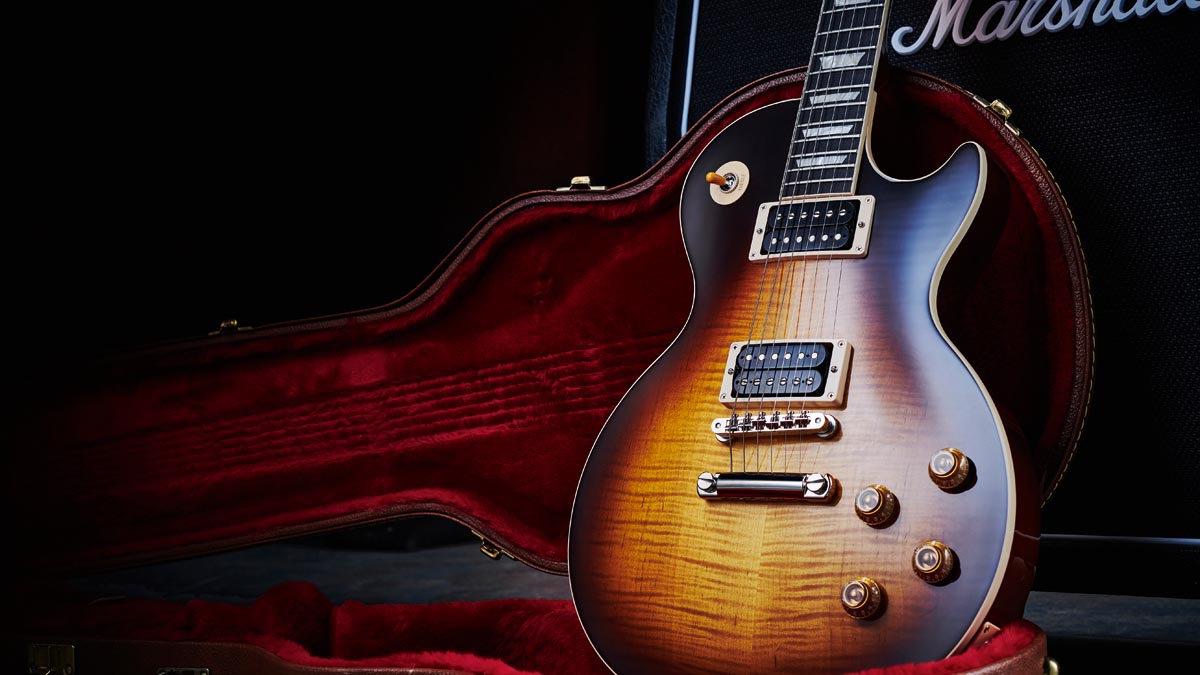
We have to have an obsession on quality
It feels like Gibson is really focusing on the details of the guitars now
"I think it's not just a focus, it's probably a bit of an obsession. We have to have an obsession on quality; we have it. We have an amazing team that we put back together, when it comes to all of our, what we call our crafteries, which is how we make guitars. And it's not just how we make guitars, it's how we make Gibson guitars, which is very different.
"So we put into put together a team that's led by our craft leader / production leader, called Jeremy Freckleton. And then from him and onto all of our crafter leaders and putting together a team of quality ninjas, it takes time to right-size and course-correct a company like this, particularly with how involved of a process it is to build Gibson guitars.
"And three years in, I'd say that it's a really good start where we are today. There's clearly a lot of ground to cover going forward. But it's a really good start on on what we make, how we make it and being obsessed with details; attention to detail and obsession on quality."
We always like constructive criticism and feedback
There are obviously the cynics; the vocal minority online but seems like a lot of that has faded away.
"Yes, but that's a result of the actions we've taken in letting our guitars speak for themselves. What we didn't do was to try to go straight out trying to convert those people just by talking to them or engaging with them. Or try to do things other than focusing on the guitars and being a guitar company again, and really putting [out] high quality guitars and building the best guitars that we've built in 127 years.
"Then, as I said, that takes time but once those guitars are out in the hands of artists, in the hands of our fans around the world, and then those negative comments, they start fading away.
"But we pay attention to them. Especially when they're constructive. We always like constructive criticism and feedback. And we have now set up the Gibson Lab, which is all about research, development, innovation, testing. So we take it seriously. And then when we find that there's something we can do better as a result of all the tests that we do in labs, and the collaboration sessions that we have in place with our quality teams, then we put that to work."
Players seem more knowledgeable than ever about the gear they play. When I look on YouTube, they're often quite perceptive suggestions.
"I know. It's not like I have a tremendous amount of time to go through them but I do spend time reading. Maybe at nights when I'm done and the familiy is in bed and everybody's sleeping I like reading what people are saying about how we're doing."

For a while, there was a perception that whenever there was a signature model with Gibson, it was a something that very few players could afford. It seems like you're very conscious of building a partnership with with legendary artists now where also there's models at both ends of the price spectrum. It also feels like you're celebrating these names in a way that maybe Gibson hasn't done before. Tony Iommi would be a good example. That was a personal one for you, right?

"It's personal but I also think it means the same thing for all of us. And it means so much for everyone around the world. I mean, Tony Iommi, the godfather of a genre that has basically spread out and has been influencing many different genres of music now for six decades.
"So, Tony being the godfather of the heavy metal genre, and one of the pioneers, we had an obligation to pay tribute to him and do right by him. But also, doing doing right by him is also doing right by our fans who love what Tony has done and what he's done on his own when he's done with Black Sabbath.
"So on one hand to answer your question, yes. Paying tribute to our icons, those that have defined decades of music and influenced so many players around the world, and then at the same time, having a range of options, from all the way from the highly collectible aged Murphy Lab Custom Shop that's an exact replica of Tony's SG Monkey – the one that started it all – to a Gibson USA offering handcrafted in our Gibson, USA craftery. It's a non-aged, great representation of that instrument.
"All the way to an Epiphone; highly accessible, but still incredibly authentic. Made by us overseas, with with great attention to detail with solid woods, but and within a very accessible price point. Which is what we're launching next with Tony; the Epiphone SG monkey.
it's about paying tribute to our artists, celebrating them, and being custodians of their name
"To answer both of your questions, it's about paying tribute to our artists, celebrating them, and being custodians of their name. And being able to offer a spectrum of price points so that everybody from someone that grew up listening to Black Sabbath and has the ability to buy the Custom Shop model, all the way to a middle ground offering with Gibson USA, down to a highly accessible price point with Epiphone.
"And we've been applying that across artists. Look at the Slash Collection; a collection of Gibson USA and a collection of Epiphone Inspired by Gibson electric and acoustic guitars. And that's a great principle because we can see how all those dedicated fans of Slash, that grew up through Guns N' Roses' first round, are highly interested in collecting the Gibson USA models. And then you have all the young kids that are still influenced [now] Who for them is a guitar hero? Slash. Well, they have an amazing entry point into a Slash Les Paul or an acoustic guitar through Epiphone."
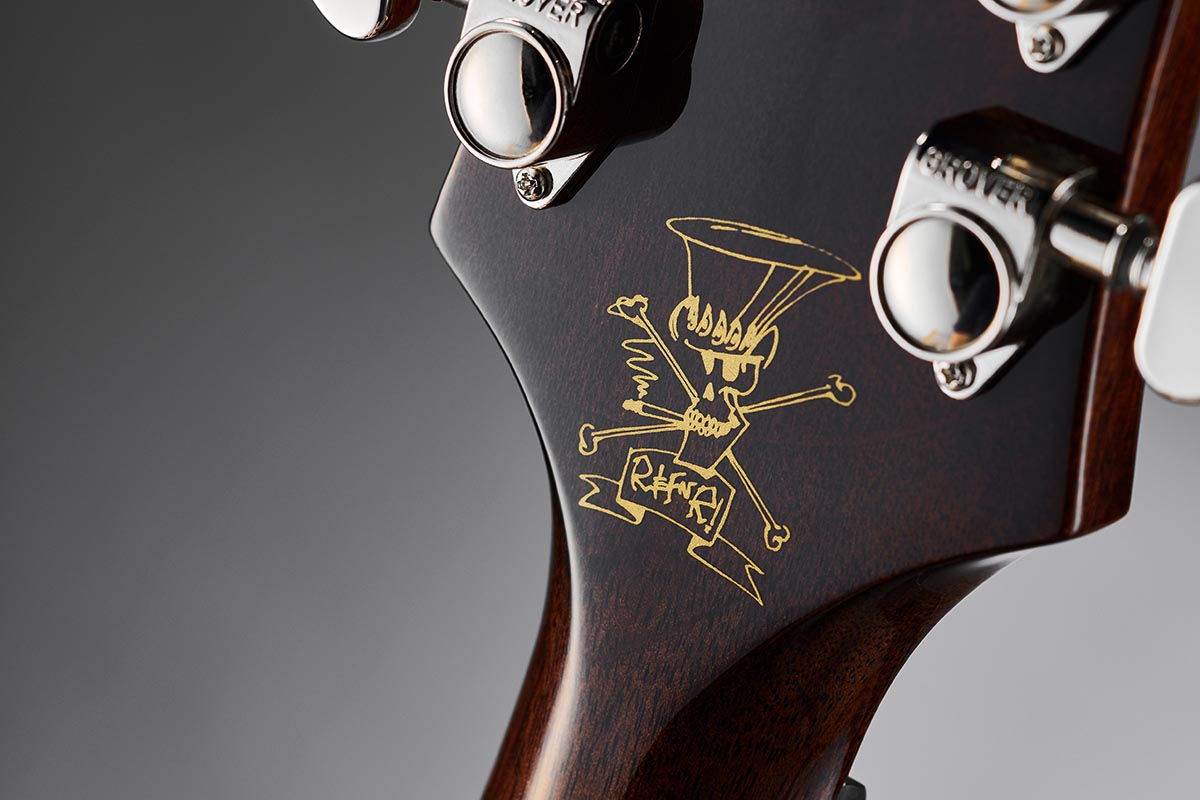
When you sit down with these artists, is there a long term plan that that to be agreed on that's thinking a few years ahead?
"We're thinking normally a three to five-year plan, initially, with the intention of that relationship being much, much longer. But it requires us to plan ahead a couple of years. Because it's a very involved process of first going into the design board and really working on design, renderings, specs; trying to create a hypothesis of what we want to do together. Then on to prototyping in our prototype lab which is housed inside of Gibson USA. At the Custom Shop, Epiphone and in our Bozeman craftery we have all these prototype labs.
"So they go into prototyping, and that's a back and forth with the artist. It can be multiple months until we reach final prototype. And then we do a pilot run to test the concept in a manufacturing environment. And then retail introduction that requires creation of marketing assets, promotional materials, content and staging of the instruments around the world so that we can actually do a proper launch. That's at least an 18 month process to get the first one out."
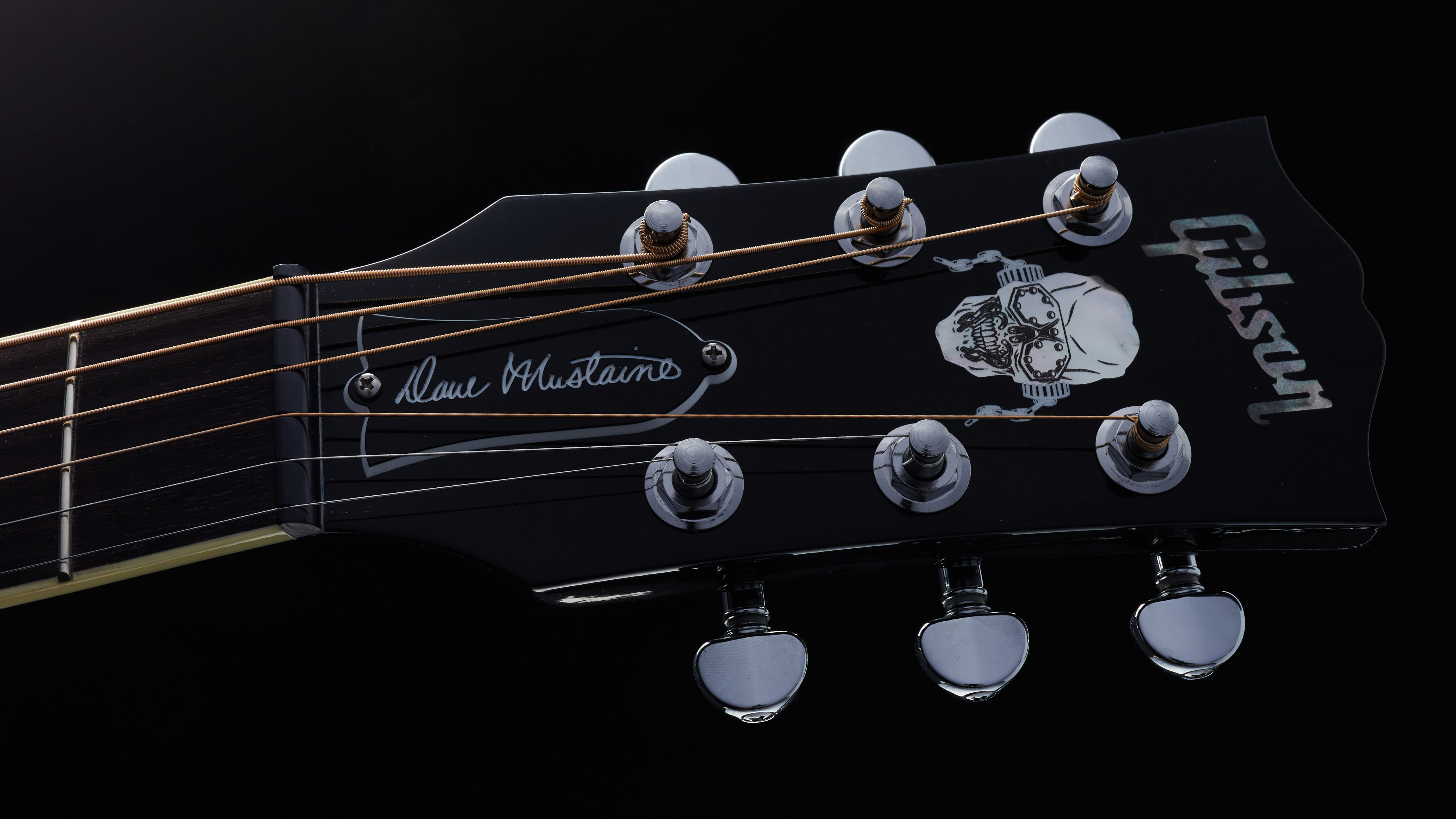
He was confident enough in the instruments that he said, 'Alright I let me put them through a tour'
And with Dave Mustaine, that that sounds like an even more involved process, because it's a relationship across different brands including Gibson, Epiphone and Kramer. And he wasn't previously playing a Gibson as a signature model.
"We've been through everything that we just talked about with Dave. The good thing about working with artists like Dave, Slash, Adam and Tony is they know what they want. And so that actually makes it easier for us, because creating the initial hypotheses of what we're going to prototype is actually much faster. And so working with Dave, he really knew what he wanted.
"We then pivoted really into creating a number of different options and prototypes that were hitting what he was looking for, leading to the final prototypes that he just took out on tour. And that was a great moment for testing. He was confident enough in the instruments that he said, 'Alright I let me put them through a tour'.
"So in the next couple of weeks, we're going to announce the initial pre launch leading to, early next year, the actual first full launch of the initial flying Vs that are going to be Gibson. But as you said, Dave is going to span from Gibson, and inside of Gibson – the Gibson Custom Shop, Gibson USA and Gibson acoustic – then on to Epiphone. Including Epiphone Custom and Epiphone Prophecy, and then Kramer with Kramer USA-made – [at] our Gibson USA craftery – and Kramer overseas, so we can cover all the different options and price points."
The Dave Mustaine acoustic signature you've been working on has an innovative design too.
"It's really interesting because we first started with a smaller body but a sharp cutaway, and he actually used that guitar on the [Megadeth] record that hasn't come out yet. And then we pivoted into a bigger body in the style of the Gibson Songwriter.
"And so we are going to go with that bigger body. A very particular guitar; highly involved, 24-fret acoustic. Absolutely beautiful. Every every detail into design and then the construction is a very involved process because of all the things that Dave wanted."
It's almost like having in-ear monitors while you're playing it
The perception might be that Gibson would have a softly softly approach to innovation after 2015 and be careful not to upset the more conservative guitar fans, but that's an example of quite bold innovation isn't it?
"Innovation is not just how long it are looks or what goes into it, it's also creating the right conditions in our crafteries to be able to run a modern day business, that at the same time of being a modern day business is in celebration of craftsmanship. And so being able to come up with those concepts with Dave, for example, and what we just recently did with the Generation Collection.
"That's an innovation that we borrowed from a 1964 archive that we had, where they had developed a sound hole that was on the upper bout of the side, facing the player. We built that guitar. We actually said, let's build that actual blueprint guitar first and see how we can put ourselves in the mindset of what they were thinking back in 1964.
"It was actually labelled the J-45 Modern, that was the title of the blueprint. After building it, we took it to the lab, and we said, 'Well knowing what we know today, what what would we do differently? And that original '64 blueprint didn't have the sound hole facing the audience, it just had that one.
"So we decided on a hybrid concept of a guitar that has a traditional sound hole facing the audience and the player port, as we now call it, but moved on to the lower part of the guitar on the side that is actually facing you directly as you're playing, and immerses you and hits you straight away.
"It's almost like having in-ear monitors while you're playing it. It gives you a very different sonic experience, as opposed to the sound hole like it was in the original blueprint where you actually cover it a little bit with your arm."
Is there a collection of old innovations like that that you've been compiling?
"Yes, and that one I like it because it's I feel like it was started in 1964 and introduced in 2021. There are other things in the archives that have not been released, or we're putting through a lab."

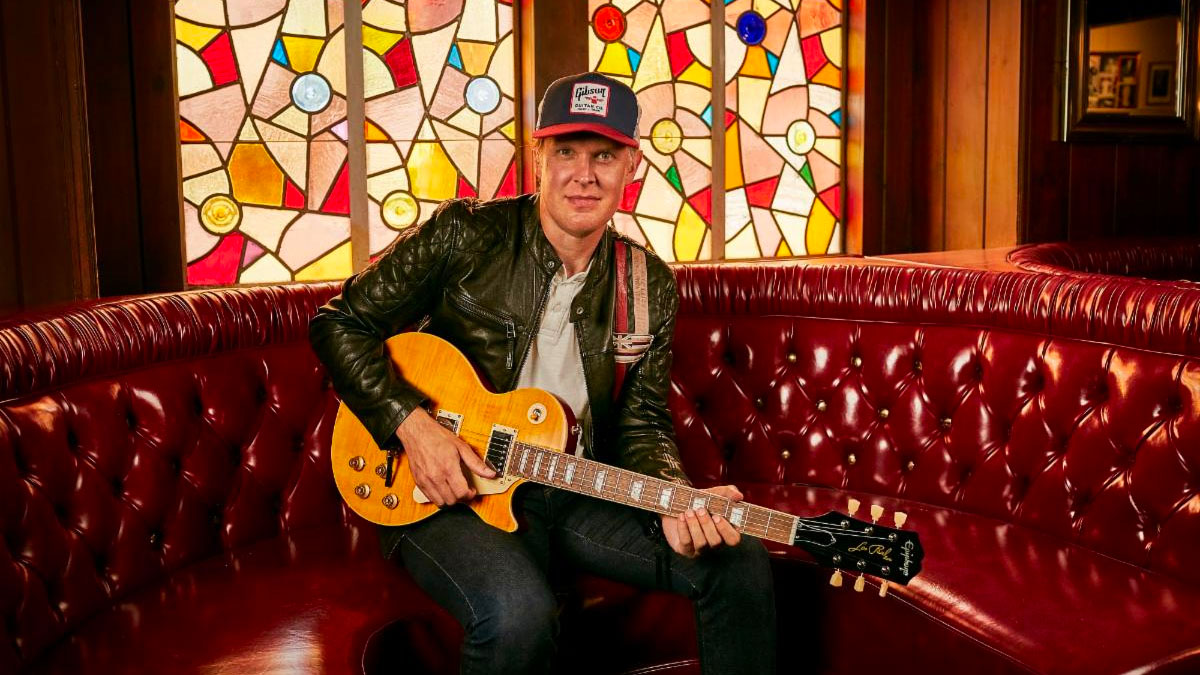
Epiphone releases stunning replica of Joe Bonamassa’s ’59 Gibson Les Paul Standard ‘Lazarus’
It's been an amazing year for Epiphone. There's a perception that a player can work their way up to Gibson through Epiphone, but looking at instruments like the two '59 Les Paul Epiphone models this year, they kind of blur the lines between Gibson and Epiphone. Are you conscious of that?
"I think there's both. There's premium icing Epiphone to get A grade Epiphone experience and an amazing price point. That is a little higher, obviously, but it's still an incredible price point for the guitar that you're getting with that attention to detail that goes into building those Epiphone '59s.
"So it's premium Epiphone to try to get a premium instrument in the hands of people that want to buy a guitar that's $900 to $1,000, and also providing a more accessible price point with Gibson, so that there is a great sort of architecture of price points and options that makes perfect sense from Epiphone Inspired by Gibson, where you have guitars that in dollars range from $300, all the way up to $800, and then the Epiphone '59s.
"And then, if you look at it from the perspective of the Les Paul, you have those options with Epiphone. And then once you leave the Epiphone brand, staying in the Les Paul platform and shape, then you enter Gibson, USA, and you go through the USA journey up, all the way up to the Slash Gibson USA Les Paul, and then you enter the Gibson Custom Shop.
"So we're very conscious of providing, for example, for every one of our shapes, but here we're talking about the Les Paul. With the Les Paul , the SG, the Flying V, the Explorer, 335 we're very conscious of making sure that there's a good / better / best offering.


It feels like Epiphone has also moved away from this idea of, if you've got an Epiphone, it's because you couldn't afford a Gibsont. Especially with the return of models like the Crestwood, it's really coming into so its own as a brand again.
"Yes, and you see what we have done with the Crestwoods and the Coronets and those instruments were the originals, and the Casino. Now having the option of also getting a USA-made Casino at Gibson USA, or a USA-made Epiphone Texan, by doing that, we're actually recreating like you said, that affinity with a brand, which is actually an older brand than than Gibson.
"Epiphone starts at 1873 and Gibson; Orville started making guitars in 1894,. Epiphone was at the forefront of that rock 'n' roll revolution together with Gibson. But by doing justice to the brand, we not only are providing instruments that, like we say, are for every stage with Epiphone Inspired by Gibson, but we also are bringing back all those originals at Epiphones that made Epiphone famous."
A lot of people picked up or returned to the guitar during lockdown and a lot of electric and acoustic guitars were sold. Do you see Gibson as having an ongoing role to play beyond the selling experience, in keeping those people inspired? Especially as there's reportedly a high rate of beginners giving up. Where do you think these opportunities can come?
"We took that decision three years ago. So we first launched Gibson TV, which has been just incredible to see. We underestimated Gibson TV, it's just become a great medium for us to engage fans around the world with with great original content, with great techniques, with great options with a partnership with Marty Schwartz [of YouTube channel Marty Music] where you can use all of his lessons and engage with him.
"So Gibson TV was one of those first steps we took into creating that future engagement to keep people excited, and making it easy for them to keep playing guitar and learning how to play guitar. And also getting inspired by watching this amazing original content. That is for the most part guitar-driven so that fans can watch that and say, 'Alright, I need to keep learning because I want to be able to do that' – what they're watching on TV.
"Riff Lords was another great example of getting icons to play the riffs and teach you how to play the riffs the way they play them. So that was first and then we that we started redoing our website experience.
"We launched the Gibson App. The Gibson App has an actual tool in a partnership that we did with Amped. That is a group that has been developing for many, many years, this learning tool that uses audio augmented reality.
"That's another option that we're offering, and that's the learning tool inside of the Gibson App that adapts to the way that you're playing when you're learning how to play a song, it listens to your playing, and it constantly adapts the lesson. So you don't have to go back and watch something again, rather it does it for you. And it tells you how to play something, maybe a couple of different ways until you get it right. And so that's been out now for over a year.

All of these steps that we've been taken, are all in service to creating engagement, providing an amazing experience, making it easy to play, making it easy to stay playing, or to learn how to play, and to get inspired
"And we then opened the ultimate guitar experience, which is the Gibson Garage. That was a very big investment. It's in Nashville. The first one is in Nashville. It's at the heart, at the centre of culture of Nashville. And the traffic that we've been getting there is such that now it's become a destination. And that's another place where it's all about the experience.
So it's all about the experience. You go in there, you can try you can try anything from a Murphy Lab '59, or a Gold Top, all the way down to all the Epiphones and all the acoustic guitars; Custom Shop acoustic, USA acoustic, Original Collection, Modern Collection.
"You never know who you're going to run into there because all of our artists come through, and they watch that and they get really excited. There's 200 guitars going around on a conveyor belt. It's really creating that sort of ultimate experience of what's going on at Gibson. You go in there, you say, 'Okay, I get it'.
"So all of these steps that we've been taking are all in service to creating engagement, providing an amazing experience, making it easy to play, making it easy to stay playing, or to learn how to play, and to get inspired.
"And then most recently, we launched Gibson Records, which is again, our natural evolution in the development of Gibson. Having first focused on being a guitar company again, and then all the things that I just talked about, leading to then launching Gibson Records. Which it's not about which genre Gibson Records is going to be focused on. Gibson Records is going to be focused on guitar music. That's what we're going to be focused on across genres of music. And starting with Slash And The Conspirators and the album coming in February. So that's going to continue to grow."

I think it starts with, what music do you love? What sounds do you love? And then then you can start picking
Having a physical place to see and try the guitars is important. Online you lose that. Do you have any advice for people on choosing a guitar for the first time and how they should kind of narrow down their choices?
"Well, I would say start with what what are the bands and the sounds that you love? And that that probably starts the first filtering process and then you have a certain budget. You can get this incredible Epiphone Inspired By Gibson Les Paul for 400 bucks, or you like AC/DC, or like Greta Van Fleet and you want to get that SG. Or you say I want the more premium, crafted, USA-made Gibson USA or you have the budget to say I would like to get that sort of historical clone. And the the craftsmanship coming out of the Gibson Custom Shop.
"So, I think it starts with, what music do you love? What sounds do you love? And then then you can start picking. It might also be that you really like the shape. You might think the Les Paul is the coolest shape. A lot of the young kids start with a Flying V or with an SG because it's also a lighter weight guitar.
"The first filtering starts with what bands do you love and where are they playing or, you know, it also can start with shapes. And then what we were talking about earlier; the price points and the good / middle / best offering that we have from Epiphone to Gibson USA to Gibson Custom Shop."
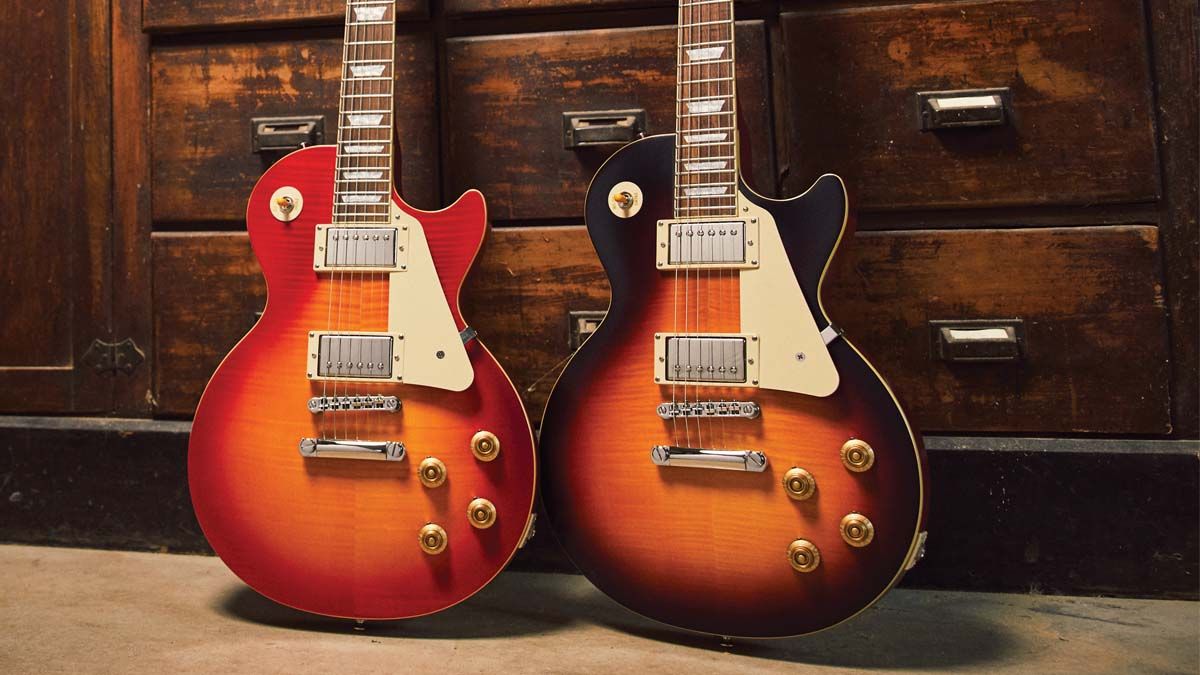
It's a very involved quality checkpoint process leading all the way down and final inspection and then once once we put the guitar in the case, it sits in a humidified warehouse
When someone is buying online, they don't get to pick up that particular guitarto try beforehand , but it feels like what we've seen coming out of Gibson and Epiphone has had consistency. Was there a new checking process that you brought in?
"We set up 15 steps, major steps, it's more involved than that, but it's about 15 major steps in the process of building a Gibson. And we've introduced 15 different checkpoints with the quality team. So it's a global quality team that is that has teams inside of each one of the crafteries.
"Ultimately, they roll up to our production ninja, as I call him, Jeremy Freckleton. And so every step of the way there is now quality checkpoints. That didn't exist in the past. It's a very involved quality checkpoint process leading all the way down and final inspection and then once once we put the guitar in the case, it sits in a humidified warehouse, and we're very conscious of that. And from there, we actually ship around the world and we also ship directly to our fans."
There's clearly demand for the relic guitars in age parts. And the Murphy Labs work is detailed. But do you ever see Gibson being able to offer aged instruments at a lower price point or is that a compromise you're not willing to make?
"I don't think it's about a compromise. It's just how involved a processes is to age guitar, I mean, we we go through an excruciating level of detail. And it takes multiple hours to do what you see coming out of the Murphy Lab.
"So it's not not so much as a conscious thing that we want to price it up. It's the actual labour that goes into making a Gibson Custom Shop Murphy Lab instrument and how many hours it takes. It is represented in the value."
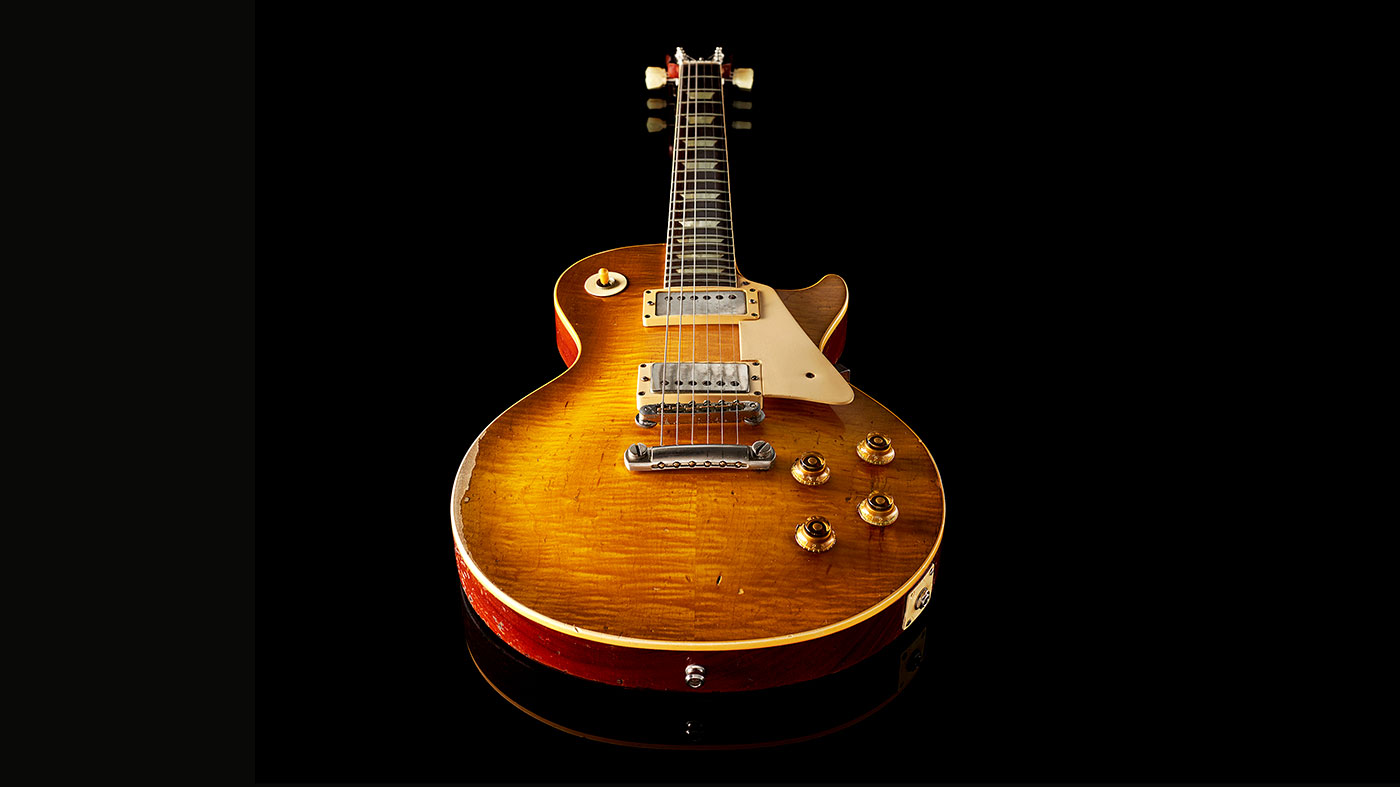
Gibson's '50s and '60s instruments are still regarded as benchmarks for electric guitars, why do you think that is?
"I have a very big '50s and '60s guitar collection; Bursts and Black Beauties, Gold Tops, 335s and SGs. And I think that if we did a blindfold test with our Custom Shop guitars and the originals, I think you're going to have a really hard time telling which one is which especially if I put Custom Shop Murphy Lab aged in your hands blindfolded. So, having said that, the 60-year-old guitars are epic. They've aged gracefully. The hide glue has evaporated and the thing has become a tuning fork. Which is why we continue to use hide glue.
"The Nitro has, for the most part, been breathing for 60 years and also starts to evaporate. And then the electronics, the wiring almost becomes a solid unit. That's why it's so hard to pull one apart – you don't want to touch it.
"When you get a really good '59 Burst made in 1959 there is that magic of the 60 years, which is why we spent so much time recreating not just the cosmetic look, but also that process of decades of ageing in the Murphy Lab. And that's why the Murphy Lab is a restricted area where that's a trade secret for us."
To buy an original from the late '50s is crazy money so it's a comparatively reasonable cost to get that kind of experience from a Custom Shop model
"And we've done the blindfolded test for many people. They don't pass. They fail. So they pick, they can't pick. I am not going to tell you they pick a Murphy Lab over the other one. They just they just keep going; trying back and forth, trying back and forth. And then they're totally undecided."

The Epiphone's ProBuckers have been especially impressive in their current form with the sense of PAF versatility.
"We changed the Epiphone formula for the humbuckers in the ProBuckers. And also, we started incorporating Gibson USA pickups in some of the runs, like the '59s. So yes, we focused on what are the changes we needed to make with Epiphone. I mean, they have CTS Pots, and the woods we're picking now are different. They have different electronics, the pickups, especially the ProBuckers. So we've made multiple changes with Epiphone and we've simplified the offering.
"The Inspired By Gibson offering now has an Original and Modern collection, and a Les Paul Standard and a Custom, Special and a Junior. So those were simple changes we've made with nomenclature to make it easier to understand, and then obviously changes in the actual guitars to make them a great experience to play."

It seems like the Gibson brands are quite good at introducing new finishes without going too far into the realms of crazy. Are you quite conscious of striking a balance with new and traditional?
"Yes, definitely. When we look at our offering there are certain certain lines we don't cross. But there may be an artist that wants to do something very special. And so that's a great forum for us to explore and get out of our comfort zone, maybe with a finish or with some kind of spec.
"So that's the way to do it; put things through the Gibson Lab and work with our artists. And then if they want to go a little wild, we kind of have permission to go there when it comes to working with an artist."
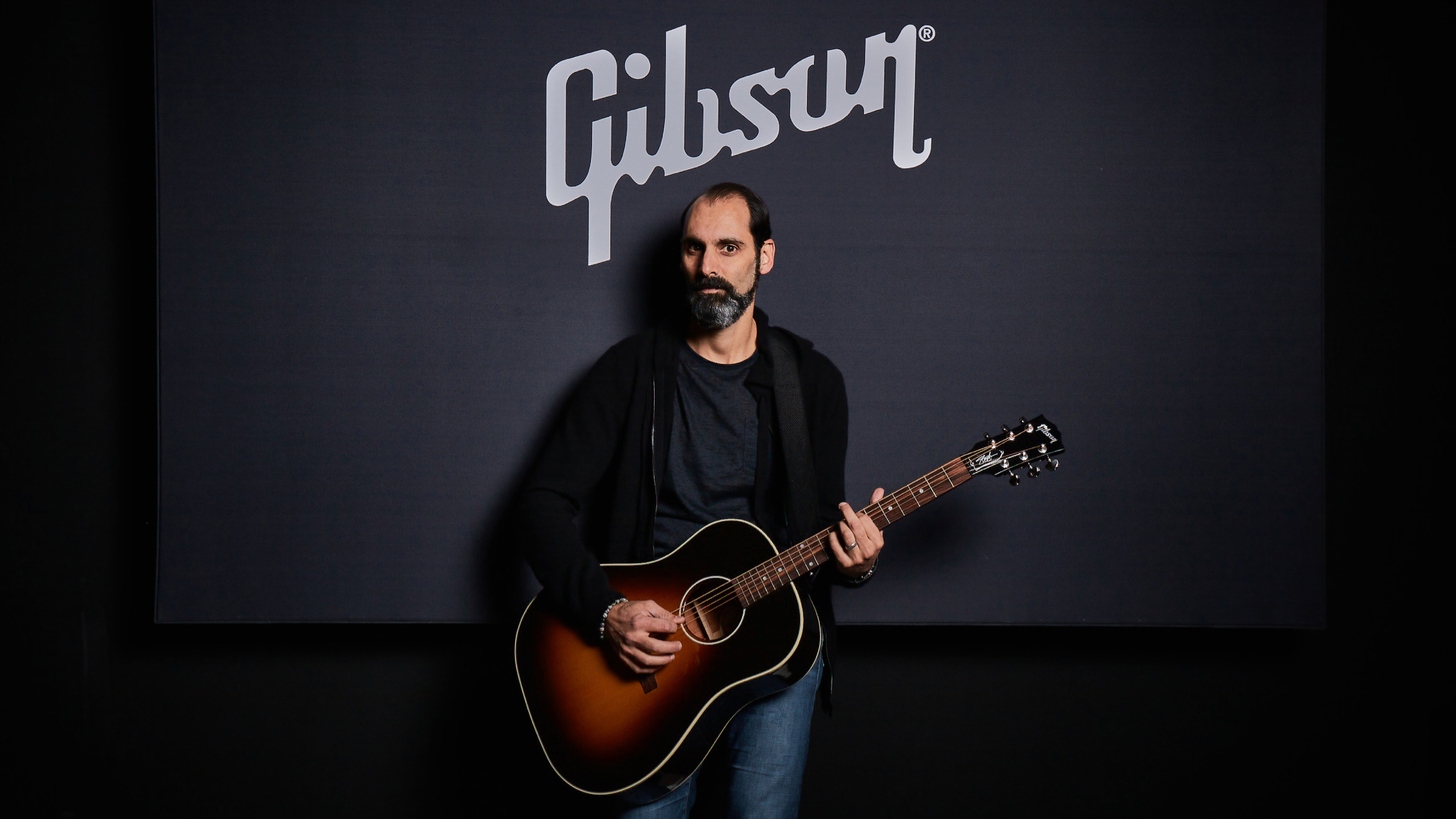
What have been your proudest moments this year?
"I look back three years, and I think where we are right now, I am the most proud of the team. When I ask myself, and I know most of us think the same way, but we ask ourselves that question of, the future looks bright for us because… and then what would you write? There are many things we talked about. But the one thing that I would add there is because we have a great team."
There's definitely the sense that the leadership team now are guitar fans.
"Absolutely. So we care. We care about the quality, we care about the legacy that we will leave behind. We care about our fans, our artists. We treat our artists just like we treat our brands. And we have a great team.
"I think, though you can never guarantee any kind of success, what we can do is make sure that we're creating the best conditions for our future. And I think we are and I think that that we have now been able to put together an awesome team."
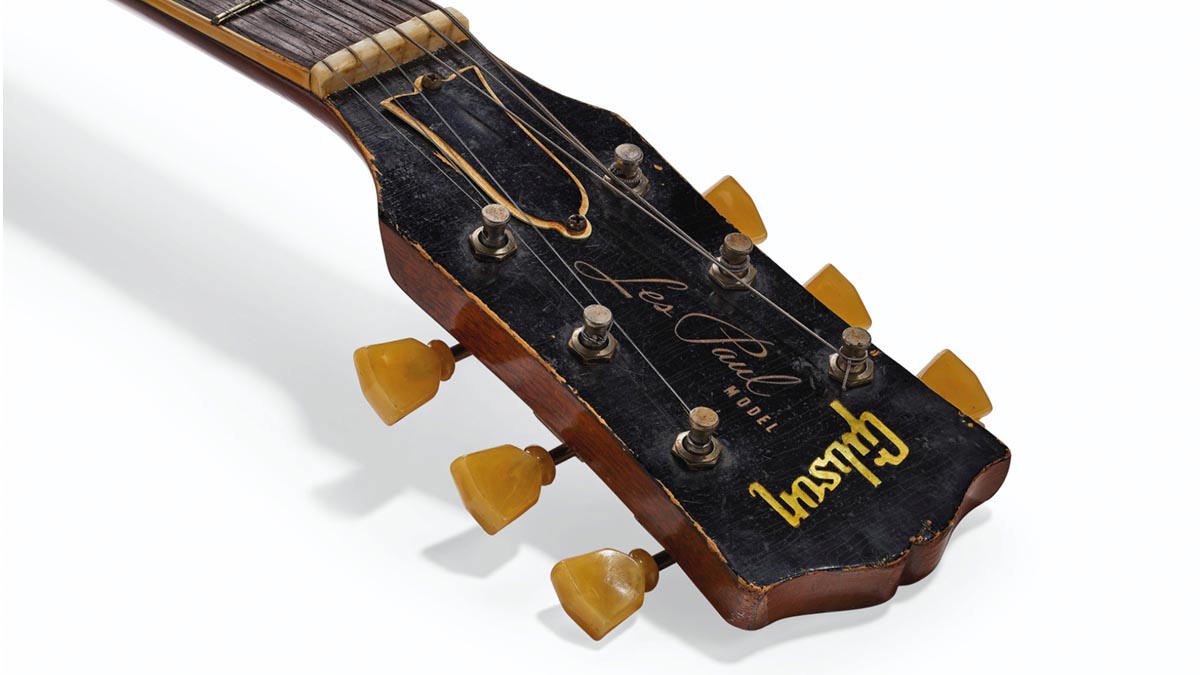
Can you reveal anything we can expect in 2022?
Well 2022 will be very important anniversary of the Les Paul. The Les Paul was first introduced in 1952. So it'll be 70 years.
Do you have a kind of personal wish list of things that you'd like to see? Any more obscure models that might return?
"We're working on a few. So maybe I'll let you leave you with; I'm excited to see a dear friend of mine Adam Jones putting a Flying V through the paces on the next tour."

It was organic, it wasn't, 'Let's go buy an amp company'
It feels like there's a there's a whole other journey to be taken with amps as well.
"The the addition of Mesa/Boogie into the Gibson family, I think is another one of those incredibly exciting moments for us, and also having the the blessing that Randy Smith is still as active as ever – who founded Mesa/Boogie 52 years ago. So Randy, we call him our master pioneer, and he's still in the lab working on designing new concepts and new circuit boards.
We have Jim Aschow [director] who has been there for over 40 years. He's our manufacturing ninja in production. We have Doug West, who has been there for about 40 years and he leads the Tone Lab, which is our innovation lab in Petaluma, California.

"When it comes to tone, Steve Mueller, he's been there for 30 years, and they call him the new guy. He's from Texas, so we call him Tex. He's like my tone brother. And he and I connected first. That's how we started the relationship, it was Steve and I talking about amplifiers and collaborating. Us sending some Gibsons and then them sending some sending some Mesa/Boogies so we could do content. That's how the relationship developed. And then that led to, okay, this is an amazing collaboration to an amazing partnership to… why don't we?
"It was organic, it wasn't, 'Let's go buy an amp company'. It was working with Mesa/Boogie, one thing led to another to having the conversation. And again, to talk about lifecycle of a product and the introduction of something new it's going to take a while, but Randy is working on the design of what are going to be the next evolution of Gibson amplifiers as well. They are going to be made in Petaluma, California. So Randy's been leading that."
For more information visit Gibson, Epiphone, Kramer and Mesa/Boogie

Rob is the Reviews Editor for GuitarWorld.com and MusicRadar guitars, so spends most of his waking hours (and beyond) thinking about and trying the latest gear while making sure our reviews team is giving you thorough and honest tests of it. He's worked for guitar mags and sites as a writer and editor for nearly 20 years but still winces at the thought of restringing anything with a Floyd Rose.
